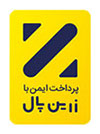“How do I introduce another language for my toddler?”
“How can I motivate my little one to speak my language?”
“How to have fun when practicing the kids’ minority language?”
These are questions I often get in the queries sent to our team. One of the recommendations I often give to parents of small children is to dedicate a puppet, teddy or some other toy to the language. In this post you will find some practical ideas on how to use “monolingual toys” when raising a bilingual child.
Choice of toy
First, you need to choose the right kind of toy. The first criteria is that your child should like it – otherwise you fall at the first hurdle. Secondly it should be a toy that invites a child to communicate. Children can of course conjure up discussions with anything, be it a toy house or a ball, but I would recommend choosing a teddy, toy animal or doll of any type, be it a superhero or a rag doll. My personal favourite is a hand puppet thanks to its versatility. With a hand puppet, you can easily show different emotions and move in a way that supports the understanding of what is spoken.
Create a backstory
To make the “monolingual toy” concept more real, create a backstory for the chosen toy. Give it a name which is specific to its language. Give it any other additional external features that tie it to the language and to the country the language is spoken in: clothing and other accessories (our bear hand puppet comes with a Moomin-character!) It would be great if you could get someone to send you the toy so that it arrives from its “home country” (maybe an idea for a gift that grandparents or other relatives could send?) Together with your child, create a story about where the toy was “born”, what it has been doing until now, why it has come to your home, what it likes and dislikes and so on.
Give the toy a distinct personality
It is beneficial to give the toy some personality traits that will help you have a varied communication. Obviously, it should like to talk. It should be inquisitive and ask a lot of questions about anything, even the most obvious things. “Is this my ear?” “What is your name?” “How old are you?” “Where is the door?” It should sometimes get things wrong, so your child can help it. It should be engaging. However, it may not always listen you, so that you have to repeat what you have to say.
Act as a translator when needed
Depending on how well your child knows the language he or she is learning, you may have to do some translating. (Yes, I know that this means you will be talking to yourself, but just go with me on this one.) This is your opportunity to introduce vocabulary you would like your child to learn or expand on.
Examples of a dialogues
If your child knows nothing or very little of the toy’s language
– Tell your child that you are going to ask for the puppet’s name
– Ask the puppet for its name in its language. Repeat the question a few times (the puppet may be “distracted”, so you must ask again)
– Once the puppet has said its name, make it ask your child for his or her name
– If your child does not understand the question, make the puppet ask for your own name and give an answer (this way you are acting as the role model for answering in the toy’s language)
You can repeat this with similar other discussions, introducing simple, important words like yes and no, mummy, daddy, play, eat, sleep etc.
If you want to expand on certain vocabulary (in this case colours)
– Point at different colours in a book or in the room, ask the puppet what colour it is.
– The puppet answers with the colour, then points to something else of the same colour and asks your child to name the colour.
– The puppet could also answer with the wrong answer if you are sure your child already knows it. Children usually find it funny when someone else gets something wrong and engage in a discussion.
Your imagination is the only thing setting the limits to these discussions!
The concept of “monolingual toys” will of course work best with small children, but they can be the perfect way of introducing a new language to your toddler, creating more engagement in your child’s minority language or just having more fun while expanding the vocabulary.

 Persian
Persian  English
English  Arabic
Arabic 


